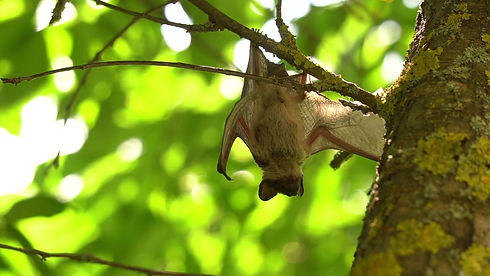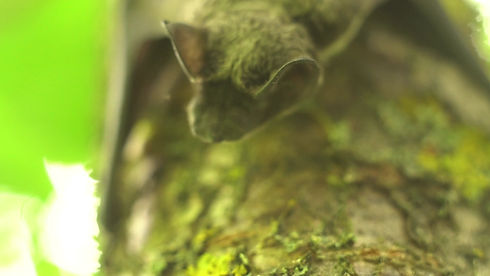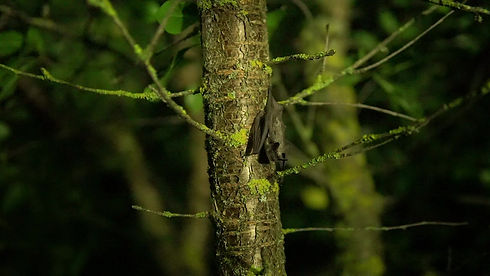


THE
BASICS OF
BAT
Written by Tavern


When you think of bats, what's the first thing to come to mind? Wings? Fangs? Ears?
All of these traits make up the flying mammal we all know and love!
Bats are the only mammal that is able to maintain true sustained flight and are more maneuverable than birds!
A bat uses its flight for capturing prey, avoiding predators, and long distance migrations. A bats wings are very similar to human skeletal anatomy which helps them maneuver through obstacles like trees and cave stalagmites.
Bats are by nature nocturnal creatures.
How do they see and hunt at night? Well, bats are chatty and they have a special ability called echolocation! They use a wide range of vocalization to use this skill. Echolocation is key for many species of bats.
70% of bat species use echolocation to hunt in midair, swooping in and gobbling up all sorts of bugs.


Bats are adorned with beautiful and unique noses. Large noses, leafed noses, swirled noses and more! A bat's sense of smell is just as complex as their hearing and echolocation. This heightened sense of smell is mainly used for identifying one another; this includes mates, offspring, and colonies.
Familiar with the saying, “blind as a bat”? Well bats are not as blind as we were brought up to believe. Bats that primarily hunt bugs have small eyes with very sensitive vision. Bats that eat fruit have bigger eyes and can see more. Bats may not see all the colors on the spectrum as humans can, but bats use their vision to navigate on long flights and can see better than humans during the hours of dawn and dusk.

Talents
and
abilities


Habitat

Bats can be found in hundreds of locations around the world!
They call many of these regions home!
This includes:
Rainforests (Haunduran White Bat)
Deserts (Sonoran Desert Bat)
Woodlands (Little Brown Bats)
and of course Caves! (Brown Long-Eared Bat)
Though some bats stray from their homes due to habitat loss, these homeless bats sometimes (and often) end up in suburban attics and cities.
To deter bats from nesting and getting comfy in your home you can install bat houses high up into trees!
These houses keep the colony warm and dry, and most importantly; away from humans!


With over 1,400 species found worldwide, bats are an incredibly critical part of any ecosystem in which they are found.
While you don't get to see them work in the day, bats are extremely helpful and pivotal to the environment.
They keep pesky bug populations at bay, like mosquitoes! Because bats eat pests like mosquitoes, they drastically reduce the chance of disease like the West Nile Virus, Malaria, and Zika from being transmitted to a person.
That's not all though! Some species of bats like the Flying Fox (Pteropus) spread fruit seeds and pollinate flowers! Nectar Bats (Eonycteris spelaea) are one of the few types that specialize in pollinating flowers. This is crucial for some plants that completely rely on bats to reproduce!
We owe a lot to bats on planet earth, so please do your best to stop the spread of misinformation and educate your fellow human on the importance of these flying friends!
